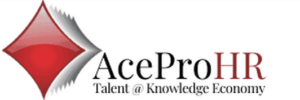A well designed Succession planning program has an invigorating effect on Organisation Culture , reduces HiPo ( High Potential) attrition and helps the firm tide over unexpected brain drain .
An outperforming Succession Planning program is a combination of the 5 pillars of Philosophy, Role Analysis , Performance Management, Training & Development and Reducing Information Symmetry. But first – a recap on what is Succession planning

Philosophy
Like any other HR policy the flavour of the succession planning program depends on something as esoteric as Philosophy. I call it esoteric because its recalled, defined and explained in as many different ways as there are people and theorists. I tend to define it on Growth Mindset and Static Mindset comparison continuum.

A growth philosophy is also the antidote for a mistake most organisations make – Confuse Succession planning with Leadership pipeline creation. In the Knowledge economy high impact roles and people permeate the whole organization. How you identify these high potential roles and people will define the organsiations growth trajectory. In Google – a person can get multi million – stock options irrespective of their hierarchy & much more than a CXO depending on what they contributed
Here are some not so glamorous roles which need to be focused but get ignored by most organisations
- The Recruiter- A good Recruiter/ TA head is almost like having a magic wand , but still HR heads and CEO’s pay them less than folks in T&D or HRBP ( the role which is mostly configured as an organisational nanny) . If you have a good TA head or a front-line Recruiter- pay them out of the market- you will not regret it!
- The Team lead/ Manager in Customer Service – Zappos build a multi- billion dollar organisation on the back of its customer service, Amazon realizes that the only “human” touch it can bring is through this team and the team lead is the custodian of how the customer philosophy permeates the organisation
Role Analysis

Role analysis is a great opportunity to link the smallest organisation node with the Business strategy. I have used Balanced Scorecard to not only make performance management systems , but Analyse Roles – and it gives you a common platform and framework to analyse each Role , Role family vis- a-vis Organisation Strategy, Performance Management & Role specifications
Performance Management
How do you groom potential leaders at various in-flexion points will decide the quality of the internal pipeline. I once headhunted a HiPo from Asian Paints who was a sales super star- he had been put in charge of a factory to hone his general management skills but the client ( head of TA) could not understand what a sales person is doing in a factory and didn’t take him forward

Training & Development
A T&D budget focused on harnessing potential is one of the bravest decisions that a CHRO and CEO can make. The rate at which environment and technology changes these days – no amount of financial wizardry can prove ROI on development budgets, instead each HiPo leaving would be a “I told you so” event for the naysayers. So why would you still do it- because of the impact on the culture and because the organisations needs to survive and grow beyond the next balance sheet!

Reducing Information Asymmetry in make or buy decisions in Succession Planning.
Hiring from outside is not a failure of Succession planning- it is a decision . Its better to hire a person who fits the role from outside than promoting an unprepared HiPo and burning him/her out. But too often companies fall in the trap of hiring someone from outside because they know little about them and ignore an internal candidate because they know too much about them .

And if you are looking for a scientific basis- look no further than Nobel prize winning Psychologist- Daniel Kahenman who gave the concept of WYSIATI -“What you see is all there is” which means that we take a decision based on information presented to us – our mind does not compare the depth and quality of information available. The result is that folks who are hired from outside are actually hired on potential but folks who are not promoted from inside are done so on basis of the in-depth information available or sadly the/ biases that form because of knowing them so long. You can read more in our article Information Asymmetry and decision making in Succession planing and recruitment
by Omar Farooq
Founder & CEO

